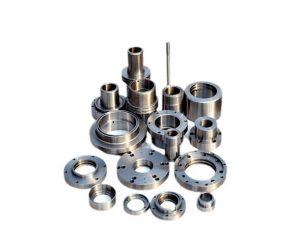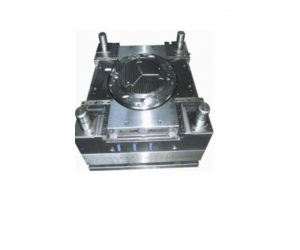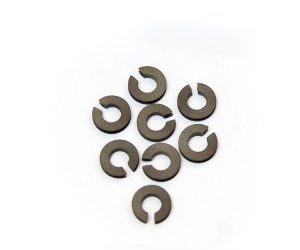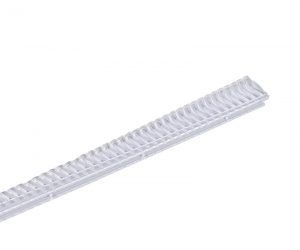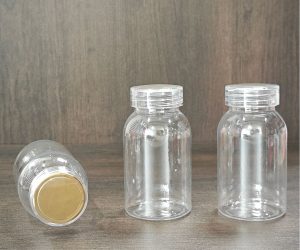The labyrinthine world of high-precision injection molding machinery presents a daunting challenge to even the most seasoned industrialist. The sheer volume of options, each boasting a unique constellation of capabilities and limitations, renders the selection process a complex optimization problem. A superficial understanding will inevitably lead to suboptimal choices, resulting in compromised production efficiency, compromised product quality, and ultimately, compromised profitability.
Navigating this intricate landscape requires a nuanced understanding of the subtle interplay between machine architecture and process parameters. Consider, for instance, the often-overlooked trade-off between injection speed and dimensional accuracy. While a rapid injection cycle might seem advantageous for high-throughput applications, it can introduce significant variations in part geometry, especially in complex molds. Similarly, the seemingly innocuous choice of clamping force can profoundly impact the final product's structural integrity and surface finish. The selection of servo-hydraulic versus hydraulic systems, each with its own energy efficiency profile and maintenance requirements, further complicates the decision matrix.
Beyond the intrinsic characteristics of the machine itself, the production context demands careful consideration. The nature of the intended product – its complexity, tolerances, material requirements, and batch size – dictates a specific set of machine specifications. A high-volume production line demanding consistent output of simple components requires a vastly different machine than a low-volume, high-precision operation focused on intricate, high-value parts. Furthermore, the integration of the injection molding process into the broader manufacturing ecosystem, including upstream and downstream operations, must be carefully evaluated to ensure seamless workflow and minimize bottlenecks.
Finally, the pursuit of high-quality, efficient production transcends the mere selection of the machine. A robust preventative maintenance program, incorporating predictive analytics and proactive component replacement, is paramount. Continuous process optimization, leveraging techniques such as Design of Experiments (DOE) and statistical process control (SPC), is crucial for maximizing throughput and minimizing defects. The injection molding process is a dynamic system, and ongoing refinement is essential for achieving sustained performance.
In conclusion, the selection of a high-precision injection molding machine is not a simple matter of comparing specifications. It demands a holistic approach, integrating a deep understanding of machine capabilities, process dynamics, and production context. Only through meticulous analysis and a commitment to continuous improvement can manufacturers navigate this intricate landscape and secure the optimal solution for their unique needs.
High-precision injection molding: a technological singularity in polymer fabrication. These aren't merely machines; they are sophisticated, self-regulating ecosystems of controlled chaos, capable of coaxing intricate geometries from molten polymers with an accuracy that defies the inherent unpredictability of the process. Their value proposition transcends mere efficiency; they represent a paradigm shift in manufacturing precision, pushing the boundaries of what's possible in material science and engineering.
The defining characteristic isn't simply precise control – it's the predictive control. These machines don't merely react; they anticipate. Advanced algorithms, coupled with closed-loop servo-hydraulic systems and real-time material property analysis, allow for dynamic adjustments that compensate for minute variations in temperature, pressure, and shear forces, ensuring consistent part quality even amidst environmental fluctuations. The injection process itself becomes a finely orchestrated ballet of pressure gradients and thermal fluxes, choreographed to an accuracy measured in microns.
Forget simple digital interfaces; we're talking about integrated, AI-driven process optimization platforms. These machines learn. They adapt. They autonomously refine their parameters based on real-time data analysis, constantly striving for optimal performance and minimizing scrap. The underlying architecture is a testament to advanced materials science – high-strength alloys, precision-engineered components, and advanced thermal management systems ensure not just durability, but also the sustained precision necessary for the most demanding applications.
Energy efficiency isn't a mere bonus; it's an integral part of the design philosophy. These machines represent a significant leap forward in sustainable manufacturing, employing advanced energy recovery systems and optimized process cycles to minimize their environmental footprint. The economic benefits are substantial, translating to reduced operational costs and a competitive advantage in an increasingly environmentally conscious marketplace.
The applications are as diverse as they are demanding. From the intricate micro-fluidic channels of biomedical devices to the high-stress components of aerospace engineering, these machines are rewriting the rules of what's achievable. Automotive applications extend beyond mere aesthetics; they involve the creation of critical safety components demanding tolerances measured in nanometers. The electronics industry relies on these machines for the production of components so small and complex that their creation pushes the very limits of manufacturing technology.
Investing in such a machine is not a decision to be taken lightly. It requires a comprehensive understanding of your production needs, a meticulous analysis of material properties, and a long-term vision of your manufacturing strategy. The upfront capital investment is significant, but the return on investment, in terms of reduced scrap, increased productivity, and the ability to manufacture previously unattainable components, is equally substantial. Furthermore, securing robust maintenance and support contracts is paramount; downtime is unacceptable when dealing with machines of this caliber.
In conclusion, high-precision injection molding machines represent a pivotal advancement in manufacturing technology. They are not merely tools; they are strategic assets capable of transforming businesses and driving innovation across a wide range of industries. Their ability to deliver unparalleled precision, efficiency, and sustainability positions them as indispensable components in the future of advanced manufacturing. The decision to invest is not merely an economic one; it's a strategic commitment to the future of precision manufacturing.
What is Injection Molding and Why is it Important?
Injection molding is a manufacturing process that involves injecting molten plastic material into a mold cavity, where it cools and solidifies into the desired shape. Injection molding is widely used to produce plastic parts and products for various industries, such as automotive, medical, consumer electronics, packaging, and more.
Injection molding offers many benefits, such as:
- High production speed and efficiency: Injection molding machines can produce thousands of parts per hour with high accuracy and consistency.
- Low material waste: Injection molding machines can reuse excess plastic material from previous cycles, reducing material costs and environmental impact.
- Design flexibility: Injection molding machines can produce complex and intricate shapes that are difficult or impossible to achieve with other methods.
- High quality and durability: Injection molding machines can produce parts with high dimensional stability, strength, and resistance to wear and tear.
However, injection molding also poses some challenges, such as:
- High initial investment: Injection molding machines require high upfront costs for purchasing, installing, and maintaining. They also require custom-made molds that can be expensive and time-consuming to design and manufacture.
- Limited material options: Injection molding machines can only process thermoplastic materials that can melt and flow under high temperature and pressure. They cannot process thermoset materials that cure irreversibly once heated.
- High energy consumption: Injection molding machines consume a lot of electricity to heat up and cool down the plastic material during each cycle.
To overcome these challenges, injection molding machine manufacturers have developed various types of machines that offer different levels of performance, precision, flexibility, and efficiency. In the next section, we will discuss the main types of injection molding machines and how they differ from each other.
What are the main types of injection molding machines and how do they differ?
Injection molding machines are used to make plastic parts. They work by injecting melted material into a mold. There are two main types of these machines: hydraulic and electric. Hydraulic machines use a hydraulic system to apply pressure and move parts around. Electric machines use servo motors for the same job. The big difference between them is how efficient and precise they are. Electric machines are more energy-efficient and accurate, but they also cost more and are a bit trickier to handle.
What are the advantages and disadvantages of each type of injection molding machine?
injection molding machines are these gadgets that churn out plastic bits by squirting hot, melted stuff into a mold. You got two big types of these machines: the hydraulic kind and the electric kind. Each has its own set of pros and cons, you know?
The hydraulic ones use a sort of liquid power system to press the mold closed and push the material in. They're pretty beefy, work faster, and don't cost as much upfront compared to their electric cousins. But, they guzzle up more energy, make a bunch of racket, and need more TLC to keep running smoothly.
On the flip side, electric injection molders use an electric motor to get things moving – think of it like turning a screwdriver really fast to do the job. These machines are super precise, do their thing quietly, and let you tweak the speed and pressure just right. Plus, they're easier on the ears. But, they come with a bigger price tag, aren't as versatile when it comes to changing molds, and can't clamp down as hard as the hydraulic ones.
How do you select the best injection molding machine for your application?
Injection molding is a process of producing plastic parts by injecting molten material into a mold. The mold consists of two halves that are clamped together and filled with the material under high pressure. The material then cools and solidifies into the desired shape. Injection molding machines are the devices that perform this process. They vary in size, capacity, features and functions. Choosing the best injection molding machine for your application depends on several factors, such as:
- The type and properties of the material you want to use. Different materials have different melting points, viscosities, shrinkage rates and other characteristics that affect how they behave during injection molding. You need to select a machine that can handle the material you want to use and provide the optimal temperature, pressure and injection speed for it.
- The size and complexity of the part you want to produce. The size of the part determines the clamping force and the shot size of the machine. The clamping force is the amount of pressure that the machine applies to keep the mold closed during injection. The shot size is the volume of material that the machine can inject in one cycle. You need to select a machine that can provide enough clamping force and shot size for your part. The complexity of the part determines the number and type of cavities in the mold. Cavities are the spaces in the mold where the material flows and forms the part. You need to select a machine that can accommodate the mold with the required number and type of cavities.
- The production volume and speed you want to achieve. The production volume is the number of parts you want to produce in a given time period. The production speed is the number of cycles per hour that the machine can perform. You need to select a machine that can meet your production volume and speed goals without compromising on quality or efficiency.
- The cost and maintenance of the machine. The cost of the machine includes the initial purchase price, the operating costs and the maintenance costs. The operating costs include the energy consumption, the material consumption and the labor costs. The maintenance costs include the repair, replacement and servicing of the machine parts. You need to select a machine that fits your budget and offers low operating and maintenance costs.
These are some of the main factors that you need to consider when selecting the best injection molding machine for your application. You may also need to consider other factors, such as:
- The availability and compatibility of spare parts and accessories for the machine.
- The warranty and after-sales service provided by the machine manufacturer or supplier.
- The environmental impact and safety standards of the machine.
By comparing different machines based on these factors, you can find the best injection molding machine for your application.
What are some of the best practices and tips for using high precision injection molding machines?
High precision injection molding machines are machines that can produce plastic parts with high accuracy and consistency. They are used for applications that require complex shapes, tight tolerances, or high quality standards. Some of the best practices and tips for using high precision injection molding machines are:
- Choose the right machine type and size for your product. There are different types of injection molding machines, such as hydraulic, hybrid, and electric, and they have different advantages and disadvantages. For example, electric machines are more energy-efficient and precise, but they may have lower clamping force and injection speed than hydraulic machines. The size of the machine should match the size and weight of the mold and the product.
- Optimize the process parameters and settings. The process parameters, such as temperature, pressure, speed, and time, affect the quality and performance of the plastic part. You should adjust these parameters according to the material properties, mold design, and product specifications. You can use software tools or trial-and-error methods to find the optimal settings for your product.
- Maintain the machine and the mold regularly. High precision injection molding machines require regular maintenance and cleaning to ensure their reliability and efficiency. You should follow the manufacturer's instructions and schedule for maintenance tasks, such as lubricating, replacing, or repairing parts. You should also clean and inspect the mold regularly to prevent defects, such as flash, warping, or short shots.
- Use quality materials and accessories. The quality of the plastic material and the accessories, such as screws, barrels, nozzles, and hot runners, affect the quality and performance of the plastic part. You should use materials that are suitable for your product specifications and compatible with your machine type. You should also use accessories that are designed for high precision injection molding machines and match your material properties.
